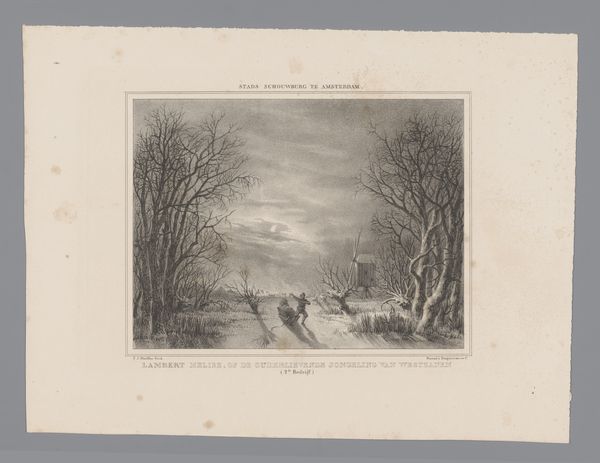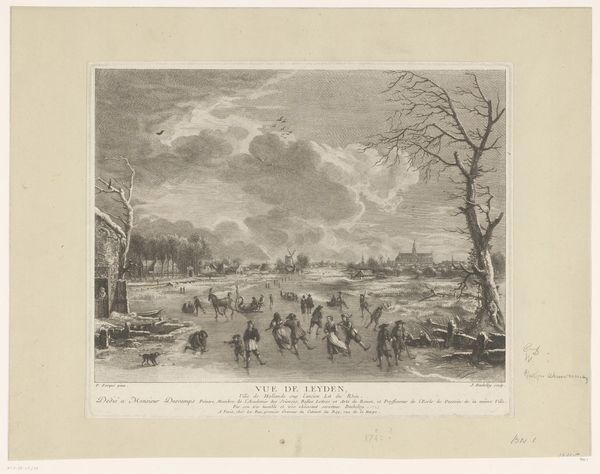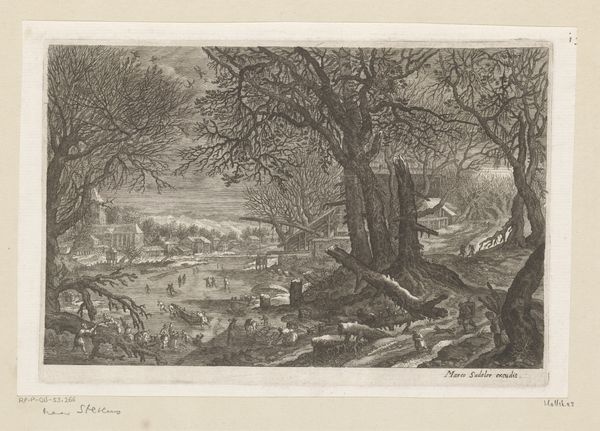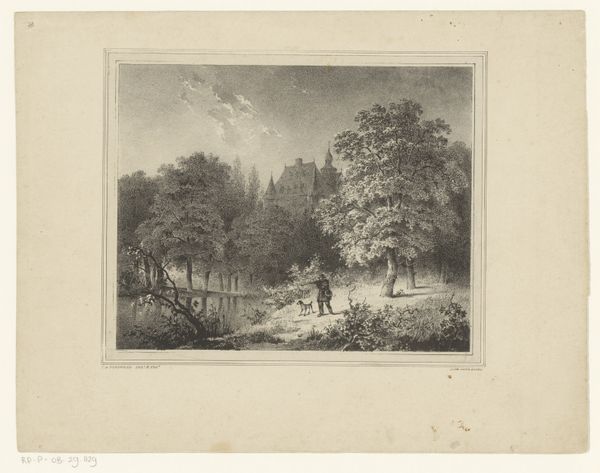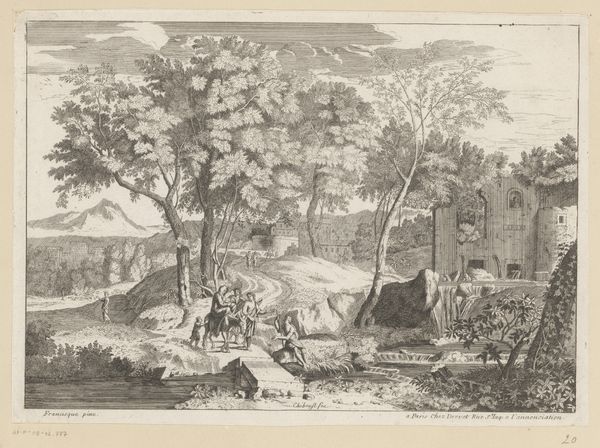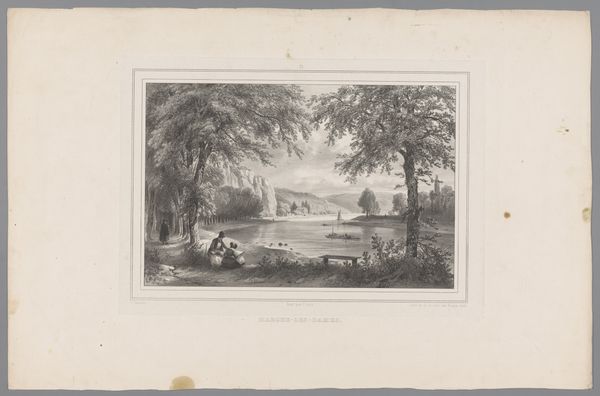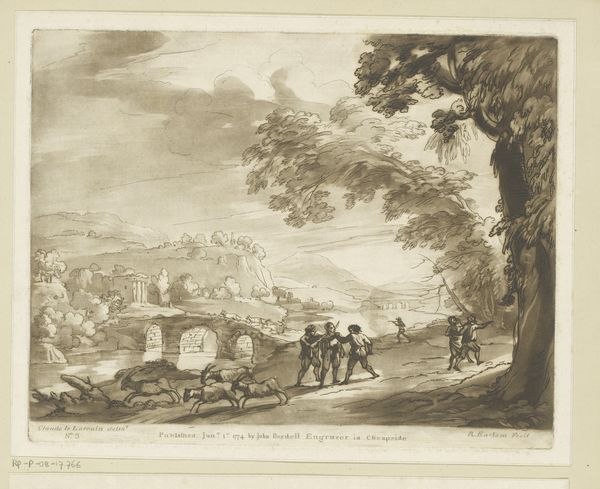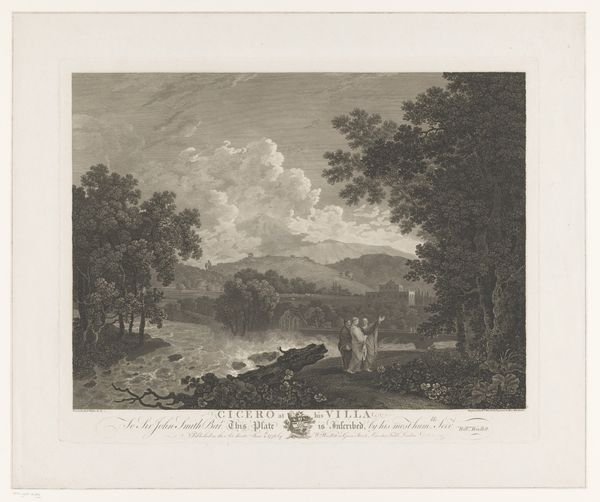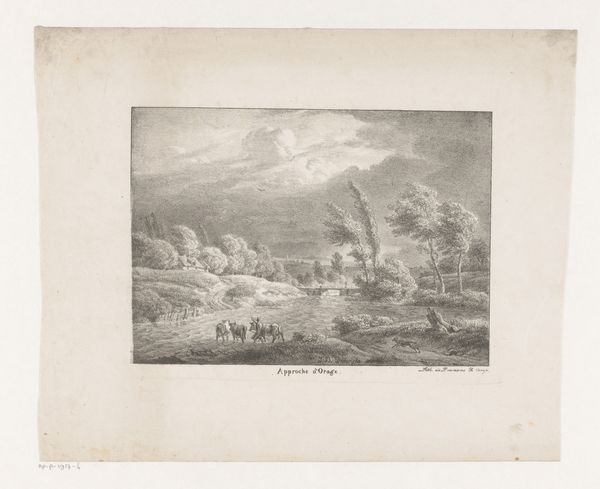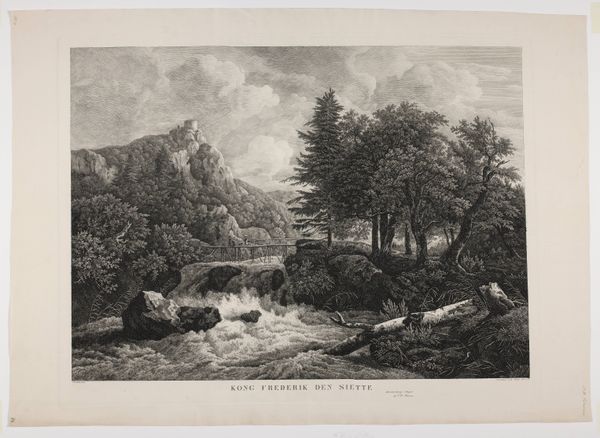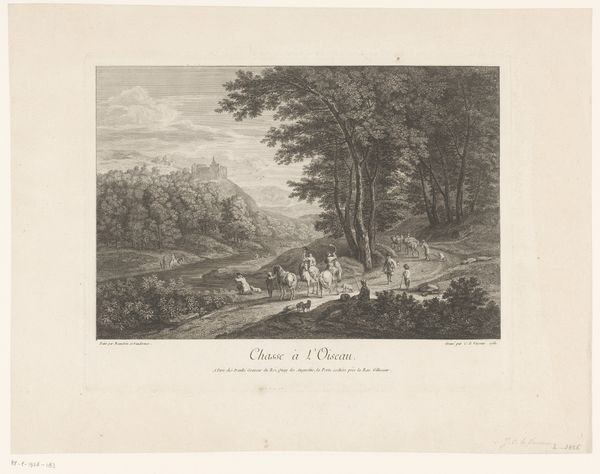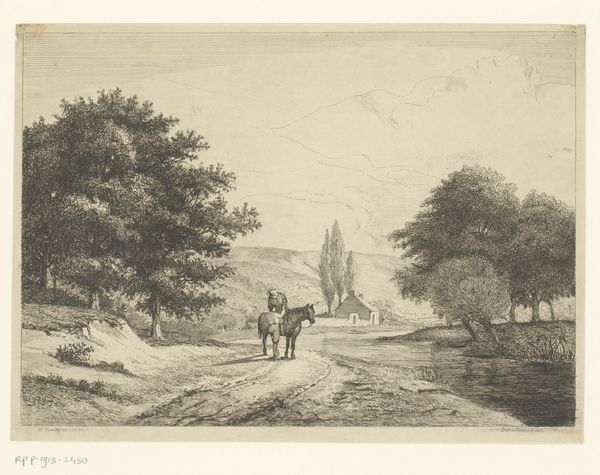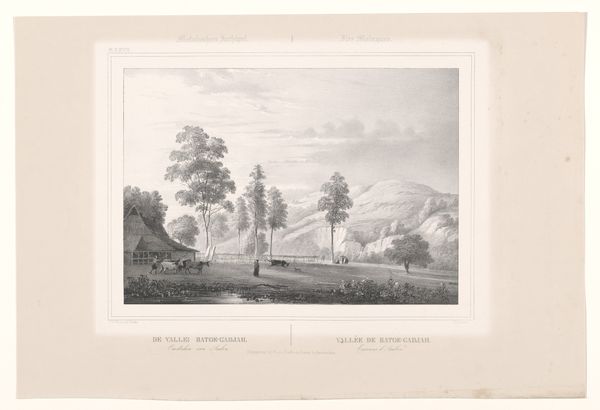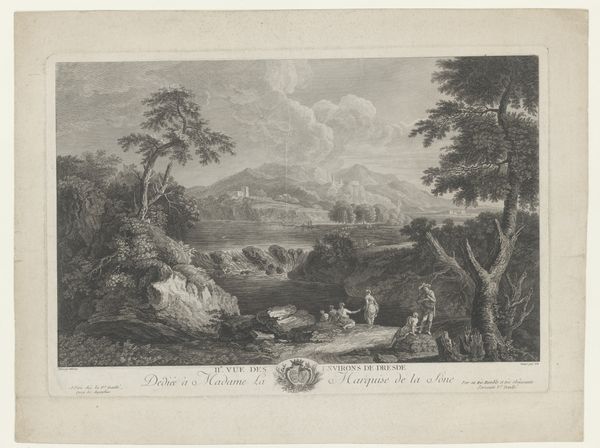
Dimensions: height 330 mm, width 400 mm
Copyright: Rijks Museum: Open Domain
Editor: Here we have “Winter Landscape with Attacked Figures,” an engraving from 1762. It reminds me of a stage, with the figures crossing the ice, framed by these looming, almost menacing, trees. What do you see in this piece, from your perspective? Curator: This isn't just a picturesque scene. I see a commentary on vulnerability and resilience amidst hardship. Look at how the harsh winter landscape almost swallows the figures; consider what dangers, both environmental and potentially societal, these people might be facing. Who has access to shelter and resources and who is left to brave the elements? What stories of inequality and survival are embedded within this print? Editor: That's interesting. I was focusing on the purely visual aspects, like the stark contrast between light and shadow. Are you suggesting the artist meant to convey a political message? Curator: Perhaps “political” is too narrow a term. It’s more about understanding the human condition within a specific social and economic framework. Artists often reflect and refract the realities they observe. What does it mean to depict people at their most vulnerable, struggling against the cold? It pushes us to consider who is afforded protection and who is exposed. Consider this: Does the title "Attacked Figures" prompt you to think of more than just the physical threat of the landscape? Editor: I guess so. The title suggests there's an aggressor, not just an environment. Thinking about social commentary adds another layer to the artwork. It becomes more than just a pretty picture. Curator: Exactly. It becomes a mirror reflecting the inequalities of the time, prompting us to question whose stories are told and whose are overlooked. Editor: Thanks for the perspective. It’s made me think about art’s role in revealing social truths. Curator: And hopefully it encourages you to see how historical narratives intertwine with our present.
Comments
No comments
Be the first to comment and join the conversation on the ultimate creative platform.
